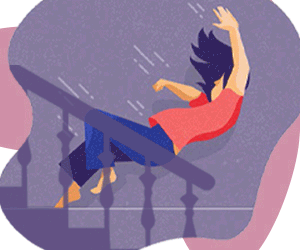Act fast. That is the best advice any doctor can give if you suspect a stroke in a loved one. Time is of the essence and the quicker you get to the hospital, the better chance you have in reducing long-term disability. With stroke being one of the leading causes of death and severe, long-term disability in the United States, awareness of risk factors and warning signs is essential for stroke prevention.
What is Stroke?
A stroke or a ‘brain attack’ occurs when a blood vessel to the brain becomes blocked or bursts. If the brain cells are deprived of oxygen and begin to die, those particular parts of the brain can no longer work and neither can the abilities controlled by that area of the brain. This is why time is crucial when dealing with a stroke. Symptoms of a stroke can range anywhere from temporary weakness in an arm or leg to being permanently paralyzed on one side of the body.
Unfortunately there are some risk factors that cannot be controlled such as age, gender and even ethnicity. However, there are many choices we can make that can alleviate the risk of having a stroke.
- Monitor your blood pressure: High blood pressure doubles your risk for having a stroke. According to Dr. Rost, an associate professor of neurology at Harvard Medical School, “High blood pressure is the biggest contributor to the risk of stroke in both men and women.” In order to maintain a lower blood pressure, you should reduce your salt intake, avoid high-cholesterol foods, exercise and avoid smoking.
- Losing weight: Obesity contributes to higher blood pressure and diabetes, both of which increase your chances of having a stroke. Try to maintain a healthy BMI (body mass index) and calorie intake. Eat healthier foods and increase your exercise level in order to meet your weight goal.
- Drink in moderation: Studies have shown that drinking can actually decrease your chances of having a stroke. However, it must only be one drink with the appropriate portion size. Once you increase your alcoholic drinks to more than two a day, you are increasing your chances of having a stroke! Know the standard portion sizes as well: 5-ounces for wine, 12 ounces for beer and 1/5 ounces of hard liquor.
- Treat Diabetes and Quit Smoking: Having high blood sugar as well as smoking increases your chances of clots forming and plaque buildup.
- Take a baby aspirin: Past studies have found that a baby aspirin a day can help prevent blood clots from forming. Just make sure to talk to your doctor and make sure aspirin is safe for you.
Warning Signs
Recognizing the warning signs can save a loved one from long term disability and can even save their life. Warning signs of stroke include: sudden confusion, trouble seeing in one or both eyes, loss of balance and coordination, sudden severe headaches and numbness in one side of the body. Refer to F.A.S.T to remember the common symptoms of a stroke. They are:
Face Drooping: One side of the face is drooping or numb
Arm Weakness: One arm is weak or numb. The person is unable to raise both arms without one drifting downward
Speech Difficulty: Slurred speech. The person is unable to speak clearly or repeat correctly
Time to call 9-1-1: If someone is showing these symptoms call 9-1-1 immediately

